My experiment shows that lettuce can sprout in winter and even produce an early spring harvest, but only if you protect it from cold!
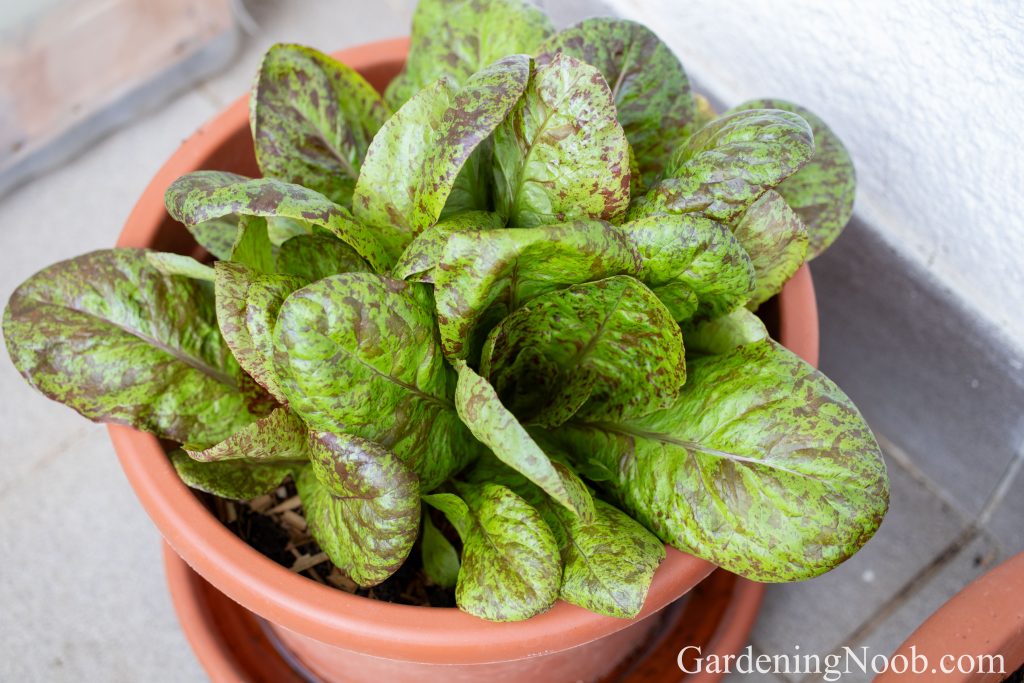
It was at the beginning of year 2022 when I suddenly got an urge to plant something. Unfortunately for me, it was still winter at the time, and the beginning of a new gardening season was at least two months away. Although the day was sunny (and thus relatively warm), the nights were freezing and the risk of snowfall in the following weeks was definitely there – I couldn’t just go out to the garden or to the allotment and start sowing seeds and growing vegetables!
So, I had to come up with something else. And what I came up with was the winter lettuce sowing experiment. Besides satisfying my urge to plant and grow something, my goal with the experiment was also to find out the following things:
- Can lettuce seeds sprout in the middle of winter?
- If they do sprout, can plants then keep growing and develop into mature, harvest-ready plants?
- Does a basic cold protection speed up the sprouting and growing process?
Planting the seeds [January]
What I essentially did that day was plant a few lettuce seeds in two different pots and then placed both on the south-facing, rainproof balcony. I left the first one out in the open. And I put the second one in the miniature greenhouse to shelter it from the cold. Watch the following video to see me in action:
Noteworthy details of the experiment at this point:
- I planted all the seeds on the 23rd of January in year 2022.
- I planted two different lettuce varieties. The first variety was “Freckles” which I have been growing for years now. It is a reliable and fast sprouter and seems to grow well in both spring and autumn. The second variety was “Leda”. It is a Slovenian variety I don’t have much experience with. It is supposed to do well in hotter, summer-like conditions.
- I planted the seeds in two different pots. I repurposed two pots that I used for growing tomatoes the previous season. Since I grew those tomatoes in pure compost, the repurposed soil I used for the experiment should thus have still retained some nutrients.
- Prior to planting, I removed all the big, compacted particles from the soil. After I planted the seeds, I also added some earthworm castings to the pot. Then I watered both pots and lightly mulched them with Miscanthus.
- While I was going through the soil and preparing the pots for planting, I stumbled upon three beetle grubs. I wasn’t too happy to see them in there. They are voracious feeders and have a strong appetite for plants’ roots. I removed the ones I found, but there might have been more of them in there.
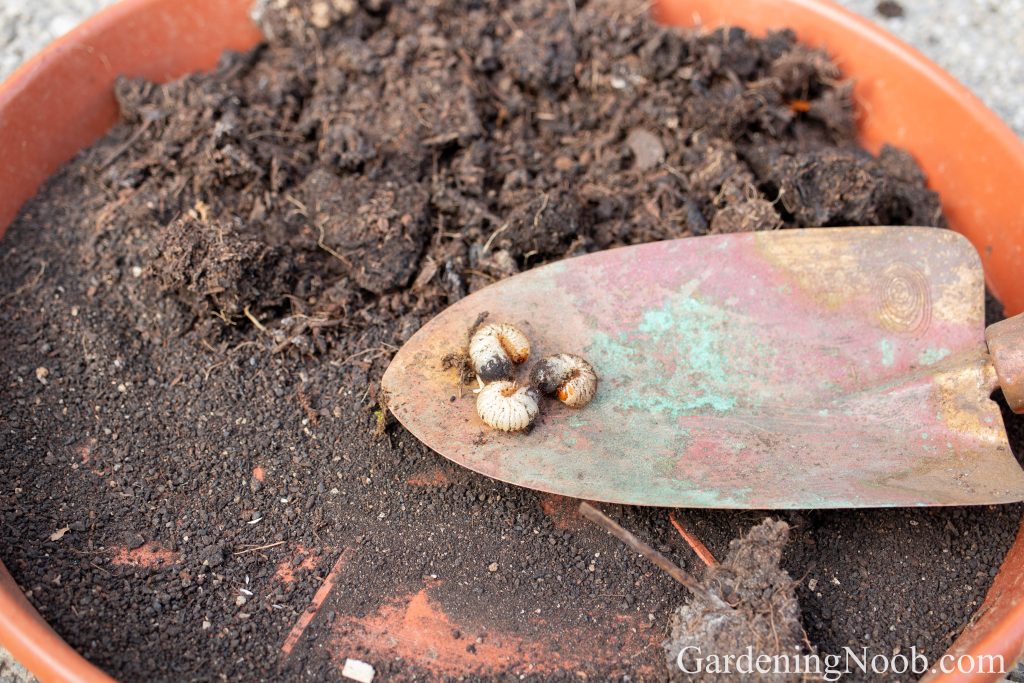
The seeds coming to life [February and March]
Lettuce seeds usually sprout in about a week under normal room temperature conditions. However, the winter conditions in my experiment were clearly far from normal. During January and February, nighttime temperatures would almost always fall below freezing point, although days, especially in February, were slightly warmer.
I certainly didn’t expect the seeds to sprout as fast as they would in normal conditions. In fact, due to all that freezing night cold, I was afraid that they wouldn’t sprout at all. But I was wrong. The seeds eventually did sprout:
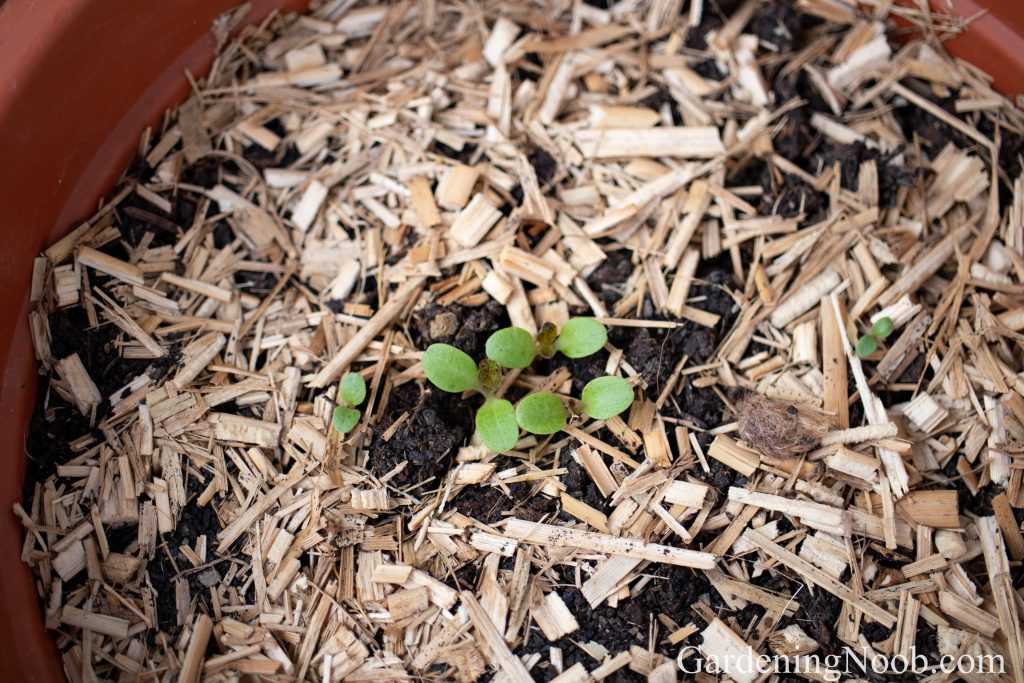
- I spotted the first seedlings in the cold-protected (sheltered) pot on the 10th of February, roughly three weeks after the sowing. More plants showed up in the pot over the next two weeks.
- I noticed only one plant in the outside pot and it was on the 26th of February which was over a month after sowing.
I was extremely happy to see those baby lettuce plants in the sheltered pot. I had a good feeling about them because they looked healthy and somewhat eager to keep on growing. I couldn’t say that for the plant in the outside pot though. It seemed stunted and frail, clearly stressed from the cold. I knew that it’s future is not bright.
Here’s the second video which covers the progress from January to the middle of March:
Noteworthy details of the experiment at this point:
- I watered the pots approximately once a week to keep the soil moist. The humidity in the air was high throughout this period which also helped keep the plants well-hydrated.
- On sunny days, I opened the lid of the miniature greenhouse as soon as it received direct sunlight. You see, these miniature greenhouses can heat up quickly when exposed to direct sunlight. And that intense heat could kill the plants within hours.
The harvests [March, April, May and June]
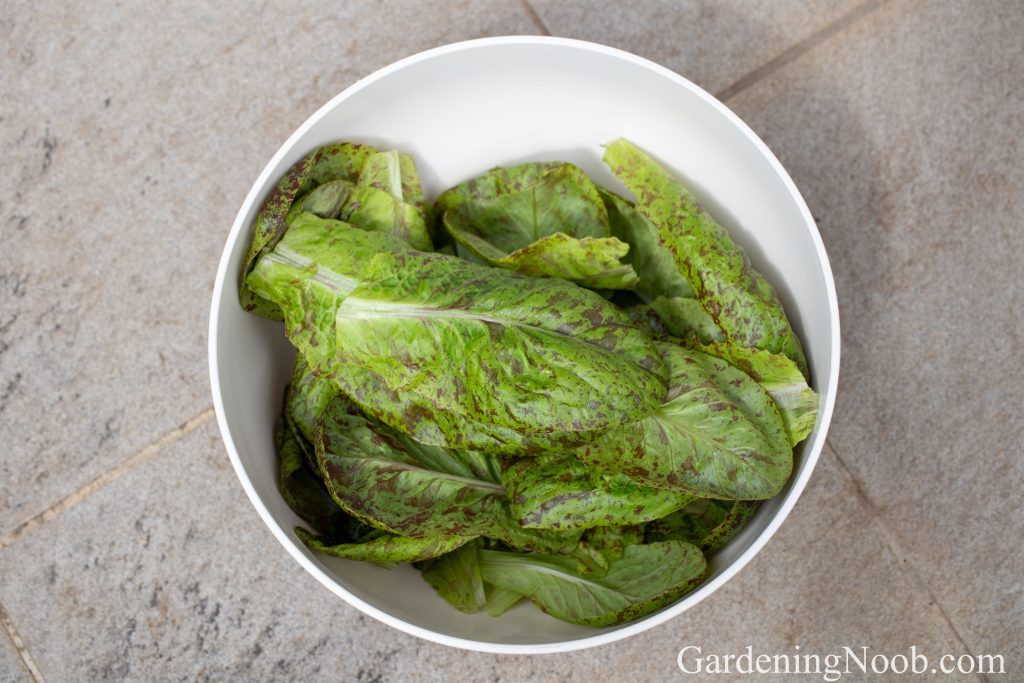
It became much warmer in the second half of March and in the first half of April – almost ideal for growing lettuce. It was neither too hot during the days nor too cold during the nights. The plants in the miniature greenhouse thrived in the weather and their growth exploded during this time period.
They soon grew so large that I began picking them. In total, I was able to harvest them four times:
- The first harvest was on the 16th of April, less than three months after I planted the seeds.
- The second harvest was on the 9th of May, a little more than three weeks after the initial picking.
- The third harvest was on the 22nd of May, two weeks after the second picking.
- The fourth harvest was on the 5th of June, again two weeks after the third picking.
While the plants in the miniature greenhouse were thriving, those in the outside pot struggled. I suggest watching the third (final) video to discover why:
Noteworthy details at this stage of the experiment:
- The temperatures gradually increased from March to June, which means I needed to water the plants much more frequently.
- With the constantly rising temperatures, I had to monitor the miniature greenhouse more closely. I would innitially close the lid during the nights. But then, once the cold spells were less frequent, I would keep it open at all times. I would even move the sheltered pot out into the open during warmer periods when nights were no longer freezing.
- The sheltered pot soon became very crowded and some of the leaves started to rot. I removed them, so the rest of them would not get affected too. I also removed the weakest and the smallest plants, so that the remaining ones would have more growing space available.
- The fourth harvest was the last one. Then the summer began and plants bolted due to the heat. They no longer grew leaves, but focused on producing seeds instead. I tried to get seeds from the plants, but it was too hot for it. The soil in the pot dried out extremely fast and I couldn’t keep up with the watering. The plants eventually died off.
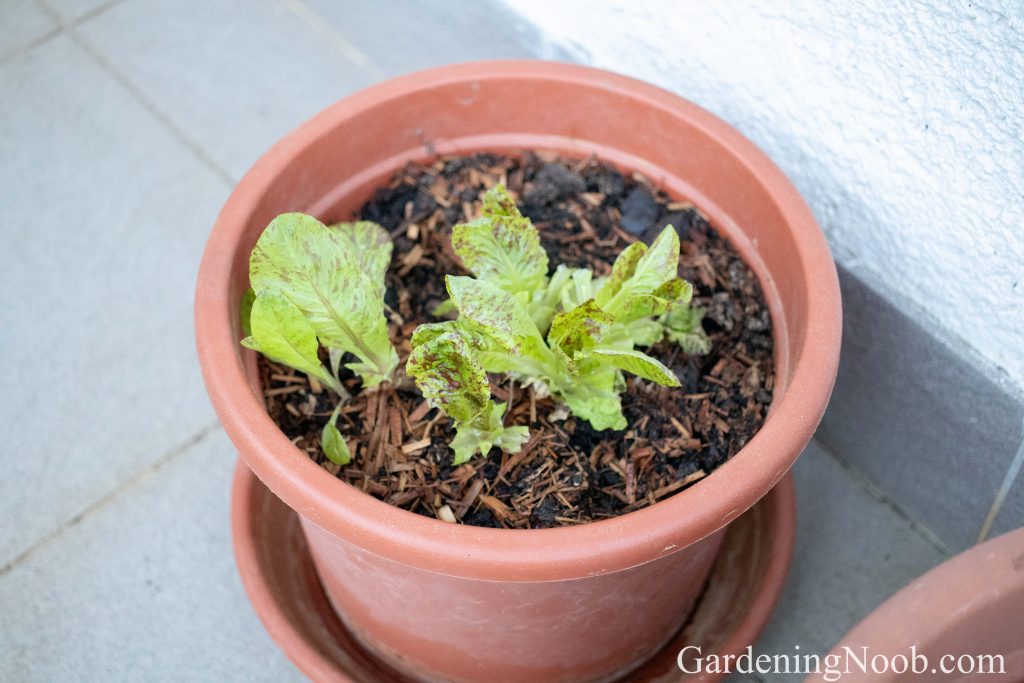
The final thoughts
When I began the experiment, I was aware that winter, with its freezing cold, would significantly affect the speed of seed germination and the subsequent plant growth – assuming that seeds would germinate at all.
The pot I left outside in the open serves as clear proof of that. Only one seed could sprout and develop into a plant, but even that one struggled against the cold until it eventually died. It wasn’t until the warmer spring weather arrived that the remaining seeds began to sprout.
What surprised me, though, was the sheltered pot. The seeds took a long time (three to five weeks) to germinate. But once they sprouted, the seedlings kept developing and growing and eventually produced an early spring harvest – despite all the cold and countless freezing nights they had been exposed to!
So, to answer my initial questions from the beginning of the experiment…
Yes, lettuce seeds can definitely sprout in the middle of winter. And yes, the sprouts can keep growing and developing despite the cold and can even produce an early harvest. But only if you provide them a basic cold protection.
